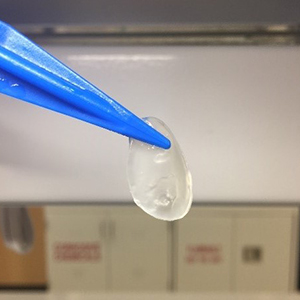Bio-inspired Hydrogels for Detection of Aerosolized COVID-19

Project Leads: Gregg Duncan
Fischell Department of Bioengineering
Bioaerosols are tiny airborne particles that either contain living organisms—such as bacteria or viruses—or were released from living organisms—such as pollen or dander. While scientists have long collected and studied bioaerosols to learn more about their impact on human health, none of the collection media used today in bioaerosol sampling has been specifically designed for the isolation of virus particles. To address this, Fischell Department of Bioengineering Assistant Professor Gregg Duncan and members of his lab are working to develop a bio-inspired hydrogel filtration media that mimics how the body’s own mucus “catches” inhaled virus particles and other pathogens in efforts to prevent infection. One of the group’s main objectives is to develop wearable bioaerosol sampler devices that can efficiently capture airborne COVID-19 particles. The team’s hope is that hospital staff and other frontline workers could wear the devices to determine if they have been exposed to the virus, even before they exhibit symptoms.
Top